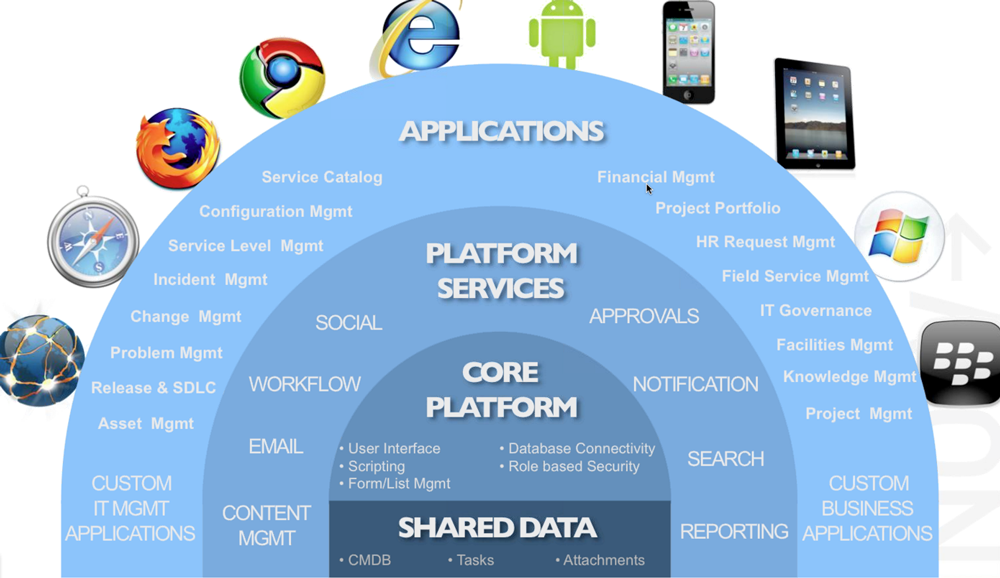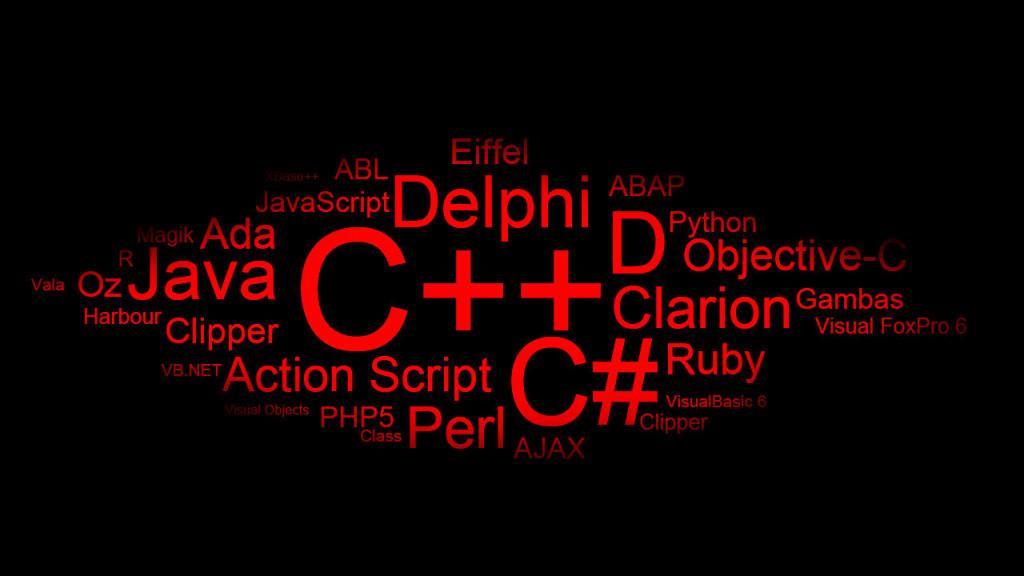Java enterprise applications
Data: 4.09.2018 / Rating: 4.7 / Views: 961Gallery of Video:
Gallery of Images:
Java enterprise applications
THE TEN MOST CRITICAL WEB APPLICATION SECURITY VULNERABILITIES FOR JAVA ENTERPRISE APPLICATIONS OWASP SPRING OF CODE PROJECT 2007 Java EE applications. AIM The primary aim of the OWASP Top 10 for Java EE is. JOnAS is an opensourced implementation of the Java EE application server specification, released under the LGPL opensource license and developed and hosted by the ObjectWeb consortium (ObjectWeb is a nonprofit European consortium, founded by INRIA, Groupe Bull, and France Tlcom). Tips on Enterprise Application Development. Introduction to Java programming Java has become a popular programming language to develop web and mobile applications for a wide variety of audiences ranging from consumer devices to varied enterprise systems. Java Platform, Enterprise Edition (Java EE), formerly Java 2 Platforms, Enterprise Edition (J2EE), currently Jakarta EE, is a set of specifications, extending Java SE with specifications for enterprise features such as distributed computing and web services. This article shows how to apply Model Driven Architecture principles to accelerate the design and development of Java Enterprise Applications that use mainstream technology, such as Java Persistence API, Enterprise Java Beans and Java API for RESTful Web Services. 1 Overview of Enterprise Applications. This section describes enterprise applications and how they are designed and developed. As stated above, the Java EE platform is designed to help developers create largescale, multitiered, scalable, reliable, and secure network applications. 00: 00 What is a simple EJB 3. 1 Enterprise Application tutorial running on JBoss 7. 00: 40 What is an example of an EJB 3. Trigent builds enterprise Java applications for Fortune 100 companies, medium sized businesses and software product companies. Scalable Solutions Scalability, reliability, low cost of ownership and maintenance are the hallmark of our enterprise Java development projects. Among all these, if you ask for the best for Enterprise Applications development, I would suggest Spring Framework. Its because Spring is a powerful lightweight application development framework used for Java Enterprise Edition (JEE). Developing Secure Enterprise Applications in Java is advisable for developers as developers can use various inbuilt security features, mechanisms, and tools. The security of enterprise application becomes more significant with companies allowing employees to access the apps on their own devices. Creating an Enterprise Application with EJB 3. This tutorial takes you through the basics of developing a Java EE 6 enterprise application and demonstrates some of the EJB 3. 1 technology features that were introduced as part of the Java EE 6 specification. Edit: let me clarify my question: I already know Java and have some experience in enterprise web applications. I want to know if PHP is equally powerful (in language structure, in today available frameworks, and so forth) to make the same complex applications that can be done in Java. Update: CUBA Platform made an impressive progress since when this article was published. To get the most uptodate information, I recommend reading it's new. What are the top 10 enterprise applications programmed in Java? What are the best Java web frameworks for Enterprise applications? Specifically, is the Java programming language about to fall into disuse? What are the weaknesses of Java in enterprise programming. According to Martin Fowler; Enterprise applications are about the display, manipulation, and storage of large amounts of often complex data and the support or automation of business processes. Alex Theedom is a Java enterprise developer with over 10 years of experience developing Enterprise Java and Spring applications in a variety of sectors, including finance, gambling, and elearning. Enterprise JavaBeans (EJB) technology is the serverside component architecture for the Java Platform, Enterprise Edition (Java EE). EJB technology enables rapid and simplified development of distributed, transactional, secure and portable applications based on Java technology. Java vs PHP for Enterprise Applications: Diceus experts share all pros and cons of both languages for you to choose the right technology for the enterprisegrade solutions. Follow our blog to read the latest news in the world of informarion technology. Java EE 8 Development with Eclipse: Develop, test, and troubleshoot Java Enterprise applications rapidly with Eclipse, 3rd Edition [Ram Kulkarni on Amazon. FREE shipping on qualifying offers. Develop and deploy fully functional applications and microservices utilising Tomcat, Glassfish servers Many enterprise Java developers have discovered that Java EE's Enterprise JavaBeans framework causes more problems than it solves. POJOs in Action is a book that identifies these problems and presents an alternative based on plainold Java objects and lightweight frameworks. In this article, Jeff Friesen reviews this book chapter by chapter. Oracle Java Cloud Service is a complete platform and infrastructure cloud solution for building, deploying, and managing Java EE applications. Use Oracle Java Cloud Service to rapidly Updating enterprise applications consists of adding a new file or module to an installed Java Platform, Enterprise Edition (Java EE) application, or replacing or removing an installed application, file or module. Before you update the application files on a server, ensure that the files are. For a long time, Java Enterprise Edition (Java EE) has been the platform of choice across industries (banking, insurance, retail, hospitality, travel, and telecom, to name a few) for developing and deploying enterprise business applications. Deploying Java Enterprise Edition applications to Kubernetes A good number of years ago, back at beginning of this century, most of us here at Banzai Cloud were in the Java Enterprise business, building application servers (BEA Weblogic and JBoss) and JEE applications. Java EE (Enterprise Edition): Java SE plus various APIs which are useful for multitier clientserver enterprise applications. The Java platform consists of several programs, each of which provides a portion of its overall capabilities. Increase productivity, accelerate development, and quickly build enterprise Java applications with the Spring and Hibernate frameworks. In this training course, you learn how to simplify development and reduce code complexity with Spring, and use Hibernate a framework for persisting Java objects. For enterprise applications in. NET, this functionality is carried out primarily by the. NET Framework and COM components. In Java, this functionality is carried out primarily by Java Server Pages, Servlets, and Enterprise Java Beans. Create NextGeneration Enterprise Applications Build and distribute business web applications that target both desktop and mobile devices. Cowritten by Java EE and NetBeans IDE experts, Java EE and HTML5 Enterprise Application Development fully explains cuttingedge. This text aims to answer these questions and many more, it is part of an advanced 3volume guide to building complex Java Enterprise Applications from the ground up that addresses design issues along the way. These practical books take a step back from detailed examination of the APIs and focus on the entire picture, so you can put the pieces. Description The first handson guide to building Java enterprise applications, updated and expanded to cover all of J2EE's exciting new features Java has always been great when it came to creating Web applets, but, until now, it was hardly up to the task of building highperformance applications. Enterprise applications are not only useful for large corporations, agencies, and governments, however. The benefits of an enterprise application are helpful, even essential, for individual developers and small organizations in an increasingly networked world. The advent of faster processors and less expensive mass storage has allowed Java to transcend the languages original limitations, and Java's platform independence makes it suitable for developing web services and global enterprise applications. Stay ahead with the world's most comprehensive technology and business learning platform. With Safari, you learn the way you learn best. Get unlimited access to videos, live online training, learning paths, books, tutorials, and more. This isn't just a book about Entity Beans and JNDI. It takes you step by step through building the back end, designing the data store so that it gives you convenient access to the data your applica The Architect Enterprise Applications with Java EE course provides delegates with knowledge needed to develop robust architectures for enterprise Java applications using the Java Platform, Enterprise Edition (Java EE) technology. Overview of Enterprise Applications. This section describes enterprise applications and how they are designed and developed. As stated above, the Java EE platform is designed to help developers create largescale, multitiered, scalable, reliable, and secure network applications. Chapter 1 What is an Enterprise Application? An enterprise application is a business application, obviously. As most people use the term, it is a big business application. In todays corporate environment, enterprise applications are complex, scalable, distributed, componentbased. Ravi Kant Soni is a Java Enterprise and Spring Framework specialist with a bachelor's degree in information science and engineering from the Reva Institute of Technology, Bangalore. He has been involved in software development for many years now. As you can see from the oracle website, the Java Enterprise Edition is a specification. There are lots of implementations from various vendors. The main difference from the standard edition and the enterprise is that for the latter you need an application server, instead of a web server like tomcat. Java Enterprise Edition (Java EE) is a popular object oriented platform that many are using to build robust, secure and scalable enterprise applications. In this course, participants will hear about the latest technology and trends in enterprise application development. Enterprise Java applications are highly customizable, so consequently, a performance test must be conducted to establish best sizing. It is a best practice to establish the size of your virtual machine in terms of vCPU, memory, and number of An enterprise application is the phrase used to describe applications (or software) that a business would use to assist the organization in solving enterprise problems. When the word enterprise is combined with application, it usually refers to a software platform that is too large and too complex for individual or small business use. The Java Platform, Enterprise Edition (Java EE) is a collection of Java APIs owned by Oracle that software developers can use to write serverside applications. It was formerly known as Java 2 Platform, Enterprise Edition, or J2EE. The first handson guide to building Java enterprise applications, updated and expanded to cover all of J2EE's exciting new features Java has always been great when it came to creating Web applets, but, until now, it was hardly up to the task of building highperformance applications. The authors discuss best practices drawn from their work in designing Java EE (Java Platform, Enterprise Edition) applications that maintain 100 percent availability. In today's 247 world, highavailability is an important requirement for any Web application. Designing Enterprise Applications with the J2EETM Platform, Second Edition Inderjeet Singh, Beth Stearns, Mark Johnson, and the Enterprise Team Boston. CUBA Platform is an open source framework for the rapid development of enterprise applications with rich web interfaces. Java Platform, Enterprise Edition (Java EE) is the standard in communitydriven enterprise software. Java EE is developed using the Java Community Process, with contributions from industry experts, commercial and open source organizations, Java User Groups, and countless individuals. Getting Started with Java EE Applications This document provides a brief introduction to some of the features introduced as part of Java Enterprise Edition 6 (Java EE 6) specification. To illustrate the new features, this tutorial will demonstrate how to create a simple Java EE web application that contains an EJB 3. The Architect Enterprise Applications with Java EE (OCM) training from Koenig Solutions is a comprehensive course that provides essential skills to build robust architectures for Java enterprise applications using Java EE technology.
Related Images:
- Do it in
- An of faith
- Cycles Carbon Cycle Answer Key
- The Alchemists Secret
- Dp Deluxe Anthology
- Kingdom 2004 s01
- Faces in crowd
- Et lhomme crea la femme
- VA Miss Goodie Goodie Reggae World
- 1080 2018 latin
- Fargo 1996 castellano
- 1 password keygen
- Dark Souls 1 pc
- Django La Otra Cara Pelicula Completa Gratis
- Windows 7 32 bit iso
- Desperate housewives s04 e17
- Inazuma 11 go chrono
- Computers for dummies
- P cutta street wars
- A brand new life 2018
- Vmware cbt nugget
- Alexandra stan mr saxobeat
- Songs for my mother
- Terror in Indian held Kashmir
- The Violent Men
- The big chill yify
- Dictionar de istorie veche a romaniei pdf
- Jeux d enfants
- Planes 2 xvid
- Ps tray factory fullcrack
- Young single angry
- Spies
- Photoshop cs5 training manual
- Libro De La Vida De Adele Pdf
- The vampire diaries season 5 episode 19
- Rhythm is a dancer
- 1985 tamil movie mp3 songs
- The 27th day 1957
- Roger whittaker mp3
- Mass effect 3 rg catalyst
- Chapter 40 Biology Assessment
- Taylor swift ep
- Introduction to materials engineering
- Time Bandits 1981
- Tae Kwon Do
- Taylor rain sinful
- Amnesia a machine for pigs
- Descargar libro ese instante de felicidad gratis
- Psych season 8 episode 1
- Abnormal Psychology Durand Barlow 7th Edition
- Mercedes Benz W116 450 Se
- The Price of Darkness
- Godsmack good times bad times
- Nightwing The Series
- Bahagi ng pananaliksik pdf
- Adobe cs5 after
- Plane missione antincendio
- The Used shallow believer
- Leadership 101 What Every Leader Needs To Know
- Pineapple express
- La France Du Xixe 1814
- ON THE CASE
- Supernatural season 9
- Turbo 1080p hindi
- Dummies for c
- What the do we know
- Love Hina Omnibus 4
- Breaking Wind
- New girl hdtv 480p
- Focus On Life Science California Grade 7
- Beyond Compare 4 1 9 build 21719
- Girl with the dragon tatto
- Ultimate spiderman 126
- Kaze no stigma eng
- Prinsessen og frosken
- Kylie kane
- Epl manchester city tottenham
- The wall special
- Him and her
- Nightmare on elm street movies
- Kung panda 1
- Soundtrack
- Жажда скорости 2018












